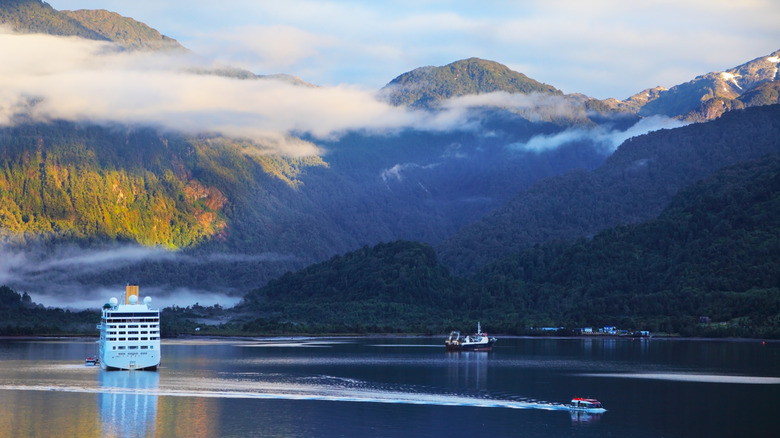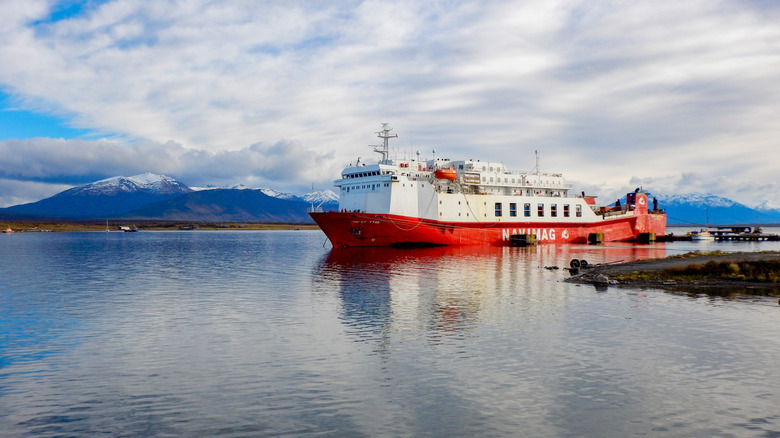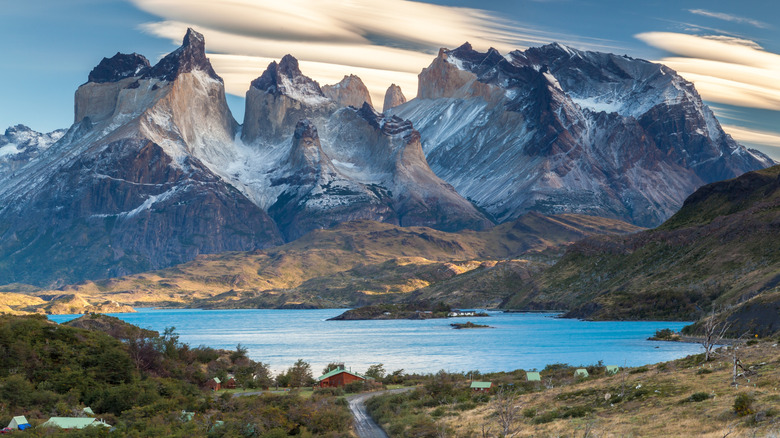The Secret Affordable 'Floating Hostel' For Cruising Patagonia's Breathtaking Fjords
Gliding through the fjords of southern Chile, the slow route through Patagonia carries ferry passengers through protected stretches of South America's glacial archipelagos. Traversing small channels slinking low below the Patagonian peaks, a multi-day ferry journey aboard the Navimag offers the adventurous, spectacular vantages inaccessible by land or sky.
The ferry travels between Puerto Montt and Puerto Natales, with the southerly trajectory taking four days and three nights, and the northbound at three days and four nights. Ships typically depart from both ports once a week between October and March. This is Chile's summer season, with the weather averaging a pleasant 71.6 degrees Fahrenheit and all the trekking trails and amenities open for business.
Most travelers setting a southern course from Santiago will fly from the capital to El Tepual International Airport, Puerto Montt's convenient airport, on one of the several flights departing daily. But if you have more time, take the slower route by renting a car in Santiago and meandering through the volcanoes, lakes, and unique national parks of Pucón, Chile's "adventure capital," and Mendoza, one of the world's most underrated wine regions near the Andes, though this would involve more than a day behind the wheel. It takes around 10 hours to drive straight from the capital to Puerto Montt. As for the other Patagonia outpost of Puerto Natales, reaching this typically involves a flight from Punta Arenas or Santiago.
What is it like to take a ferry through Chile's Patagonian fjords?
The Navimag is not one of the luxury Patagonian cruises that transports travelers on floating five-star hotels. Think of it more as a "floating hostel," as the ship's passenger experience manager described it to the blogger behind Worldly Adventurer. It's a cheaper, more communal cousin of the high-end vessels, and it's an ideal option for those seeking the same spectacular views without forking over thousands of dollars. While you can expect to pay upwards of $1,550 for a premium private cabin, you can secure a bunk in a six-person dorm for $499.
Beyond the bunk beds, the style of living aboard the simple craft will seem familiar to seasoned backpackers. Passengers eat together at small plastic tables, discussing their day's sightseeing successes over simple canteen meals. Breakfast, lunch, and dinner are all included in the price of your ticket, including free water, coffee, and fruit. The canteen serves hearty multi-course meals with vegetarian options available.
Daily yoga classes are included on board, taught bilingually to travelers stiff from their excursions in Patagonia's "trekking capital," El Chaltén. The crew hosts entertainment in the evenings, getting the whole ship involved in bingo nights and communal arts and crafts. Similar to hostel living, it's easy to meet and connect with your fellow travelers and the ship's crew, uniting visitors from all over the world.
Watch for whales, spy volcanic peaks, and explore national parks
Travelers starting their journey in Puerto Montt will get their first experience of the lashing Pacific winds before they even board the ferry. It's a port city just south of Puerto Varas, Chile's "City Of Roses," which sits amid the dazzling, mountainous lake country. Prior to ascending the ferry steps, gorge on fresh seafood pulled from the harbor or take a half-day tour through the temperate rainforests of Alerce Andino National Park.
Aboard the Navimag, the sights shift dramatically as the days while by. Clear days let you watch Chile's volcano-studded center slip into the horizon, replaced by thickly forested shorefront crag and, eventually, the open Pacific sky. As you weave inland, the fjord-flanked channels bring with them glaciers of ice that shimmers in the sun and vast cliffs overhead. Throughout, it's possible to spot many of Patagonia's most magnificent marine creatures from the ship deck, including humpback whales, orcas, and bobbing seals in the sea, as well as flocking seabirds, like the enormous albatrosses on their migratory voyage.
The end point of the southerly Navimag route is the sleepy outpost of Puerto Natales, which serves as the main gateway to Patagonia's most famed attraction, Torres del Paine National Park. Spanning 700 square miles of UNESCO-protected wilderness, it's the jewel of the Patagonian Steppe. Dedicate at least a few days to this untamed stretch, crowned by the Torres del Paine's iconic granite peaks.


